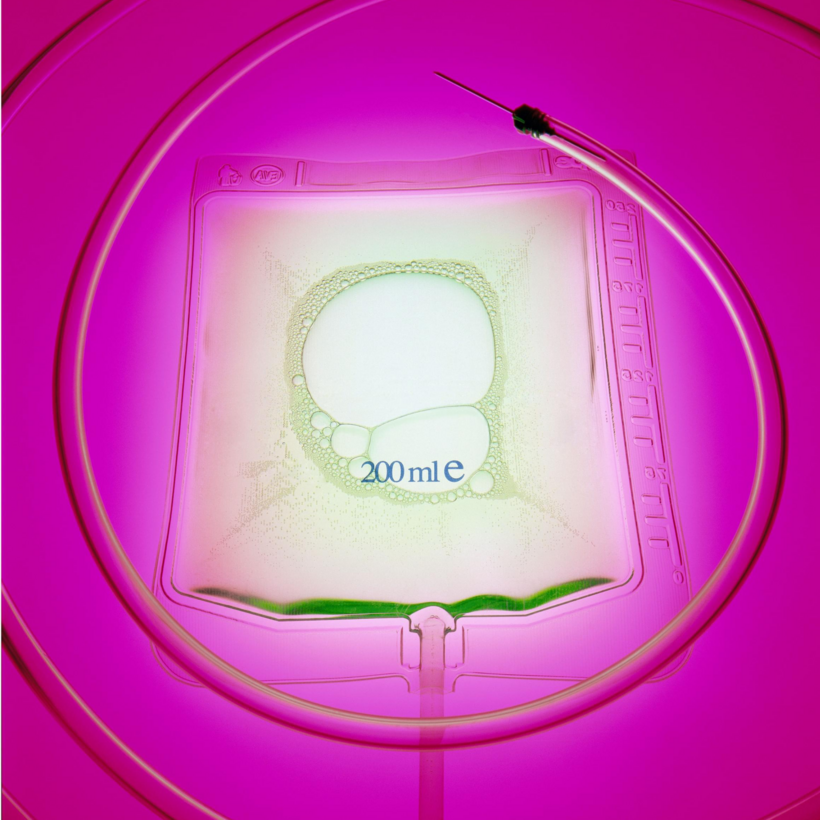It’s the longevity booster that the wellness brigade are talking about—or at least those keen on the idea of warding off age-related decline. NAD+ (or, to give it its full name, nicotinamide adenine dinucleotide) is an energy-generating molecule that occurs naturally in every cell in the body, and supplements that boost levels of NAD+ and promise increased energy and anti-aging effects are becoming increasingly popular.
A-listers and CEOs seeking eternal youth have been hooking themselves up to NAD+ intravenous infusions costing hundreds of dollars a session for the past few years. But now dietary supplements in the form of capsules and powders are proliferating in health food stores. There’s even a newly launched DIY injectable version. So what’s the big draw?
NAD+ is a coenzyme involved in important biological processes such as keeping our DNA healthy, converting food into energy and regulating sleep cycles—and it encourages our cells to repair themselves. Some studies have shown that levels decline in many tissues as we age, and it has been suggested that this decline might accelerate aging. It’s no surprise, then, that there’s an enthusiasm for supplements—and there are a dizzying variety to choose from.
The intravenous versions, available at high-end clinics and spas such as Estelle Manor and Soho Farmhouse, contain pure synthetic NAD+, which is administered directly into the bloodstream. Others might be labelled as NAD+ “precursor” supplements and contain vitamin B3, which is needed to maintain adequate levels of the coenzyme.
Already a favorite with Silicon Valley types and biohackers including Bryan Johnson, the billionaire who famously takes extreme measures to try to reverse his age, the supplement has also attracted celebrity fans. Jennifer Aniston told The Wall Street Journal last year that she uses weekly NAD+ intravenous drips, while the models Hailey Bieber and Kendall Jenner are also fans. In one episode of The Kardashians, Bieber joked: “I’m going to NAD+ for the rest of my life, and I’m never going to age.”
Dr. Abhinay Rao Settipalli, known as Dr. Abs on social media, is a cosmetic dentist who has a strong interest in anti-aging and longevity. He has prescribed NAD+ infusions for many of his middle-aged clients and says that, in addition to its energizing effects, NAD+ plays a role in regulating metabolism, boosting collagen production in the skin and even improving the capacity to exercise.
He cites a doctor colleague who was plagued with an Achilles tendon injury and high blood pressure who started using the new subcutaneous NAD+ injection. Available online, NAD+ At Home costs $500 for a month’s supply of pharmaceutical grade NAD+. “Within three months his blood pressure had normalized and his tendons had improved so much he was able to run again,” says Settipalli, who claims he has seen menopausal women who say their brain fog has improved when using subcutaneously injected NAD+. “And it improves speed and stamina.”
Not everyone is as enthusiastic about NAD+ supplementation. Richard Faragher, professor of biogerontology at the University of Brighton, says good scientific support for its use is scarce. “Most of the published evidence is conducted on experimental rodents,” Faragher says. “There are studies showing that it does help prevent some of the mitochondrial dysfunction linked to aging and disease in these animals, but data on humans is very limited—much of it not placebo-controlled—and we can’t assume that what works for animals also works for people.”
Dr David Clancy, a lecturer in biogerontology at Lancaster University, says that NAD+ supplementation for some groups of the population might be helpful. “There have been good studies suggesting some benefits for people with Parkinson’s disease and for reducing arterial stiffness in some patients at risk of heart disease. But for the general population the evidence is fluid and there is no proof it has anti-aging benefits or boosts longevity.”
I tried the new DIY syringe form of the supplement. It was delivered in a sealed, refrigerated box with a supply of ultra-fine needles. The instructions claim the process is “virtually painless”, although I winced as I filled the syringe from a small vial of synthetic NAD+ in sterile water and jabbed the needle into my middle. Advice in the accompanying manual suggests beginning with three consecutive days of injecting, then switching to one dose every other day. After that, you take it when you feel in need of an energy boost. According to Niki Davis, the managing director of NAD+ at Home, everyone responds differently, but many people feel more energized within days.
Three days in and there were no noticeable changes for me. Perhaps I was overly optimistic to expect the near instantaneous results that many describe on the Trustpilot reviews for the product. I did feel slightly more energized, but that could have been more to do with a restful holiday weekend. No youthful glow as yet.
In the meantime, is there a way of getting the benefits without supplementation? Since NAD+ is a derivative of vitamin B3, eating more foods rich in this vitamin should improve our body’s ability to produce or preserve it. Good sources of B3 include red meat, poultry, fish, brown rice, nuts and seeds and yeast extract, including Marmite.
A simple way to protect NAD+ levels in the body as we age is to avoid known vitamin depletors, which include smoking, poor diet and excessive alcohol consumption. “If you get these things right and also exercise regularly, there is clear and robust evidence that you have a life expectancy 14 years longer than someone who does none of these things well,” Faragher says.
There is some evidence that intermittent fasting, including the 16:8 and 5:2 diets, can switch on genes that prompt cells to generate more NAD+. In a paper published in Frontiers in Immunology, scientists found that brief periods of fasting increase NAD+ levels, possibly helping cells respond better to stressors. This, said the team who were looking at the effects of intermittent fasting on viruses, might “enhance antiviral defences by bolstering immune cell function.”
Exercise can be effective too. According to Clancy, “exercise is the single best thing you can do for health and for aging,” including when it comes to enhancing NAD+ levels. Researchers reporting in the journal Physiological Reports showed that 12 weeks of either aerobic exercise or resistance training improved levels of the enzyme NAMPT (nicotinamide phosphoribosyltransferase), which is needed to replenish NAD+ in human skeletal muscle. Last year, a study in the journal Experimental Gerontology reported that regular exercise protects against the age-related decline of NAD+ in muscle. Scientists from the University of Copenhagen concluded that NAD+ supplementation strategies “are less effective than exercise training in staving off muscle and systemic aging.”
Peta Bee is a U.K.-based freelance health journalist




